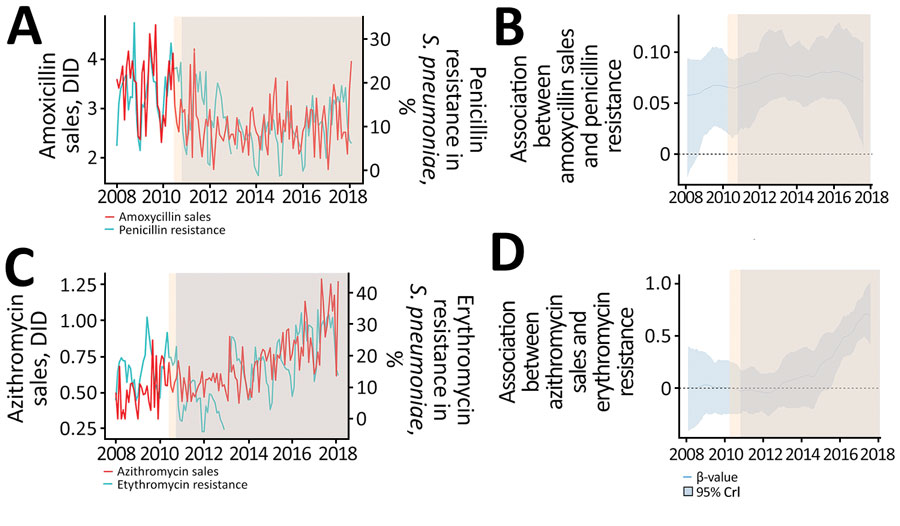Volume 28, Number 1—January 2022
Research
Effect on Antimicrobial Resistance of a Policy Restricting Over-the-Counter Antimicrobial Sales in a Large Metropolitan Area, São Paulo, Brazil
Figure 3

Figure 3. Descriptive analysis of the association between amoxicillin and azithromycin sales and Streptococcus pneumoniae resistance to penicillin and erythromycin in the São Paulo metropolitan area, Brazil, before and after a national policy restricting over-the-counter antimicrobial sales began. A, B) Amoxicillin sales and penicillin resistance; C, D) azithromycin sales and erythromycin resistance. Panels B and D show distribution of estimated β-values obtained from dynamic regression model. Estimated β-values and 95% CrI >0 suggest a direct association between sales and resistance before and after the restriction policy began. Penicillin resistance decreased after the restriction policy began (light blue shading areas) and after addition of free-of-charge PCV10 (orange shaded areas) to the national immunization program, and there was a direct association between sales of azithromycin and resistance to erythromycin 1 year after the restriction policy was put in place. CrI, credible interval; DID, defined daily dose/1,000 inhabitant-days; PCV10, 10-valent conjugated pneumococcal vaccine.